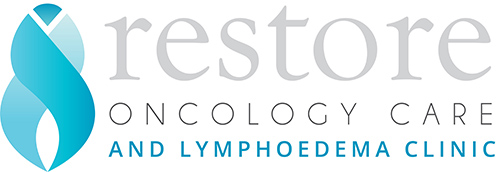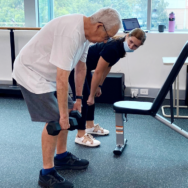Lipoedema is a chronic and progressive condition characterised by the abnormal accumulation of fat cells and connective tissue, predominantly in the lower body, including the hips, buttocks and legs. It primarily affects women and can lead to pain, impaired mobility and fluid build-up. Lipoedema can also affect the abdomen area and upper arms.
Raising awareness and educating patients about lipoedema is essential to achieve better outcomes. Fortunately, awareness and information around Lipoedema is growing, however, it is still often misunderstood and misdiagnosed, resulting in delayed treatment which can be extremely frustrating for patients emotionally and physically. As therapists, we aim to support patients through the management process and provide the appropriate tools to ensure optimum quality of life.
Lipoedema often has a genetic component and may be triggered or worsened by hormonal changes which can occur during puberty, pregnancy or menopause. It is common that an individual who has lipoedema also has family members with similar a presentation. Unlike obesity, lipoedema fat does not respond to traditional diet and exercise, posing as a challenge for patients. It is often reported by patients that no matter how much they try, they are unable to change their leg shape even if they lose weight.
There are 4 stages of Lipoedema that can help with determining the level of progression a patient may be up to. These are:
- Stage 1: Mild symptoms which involve the appearance of uneven fat distribution in the hips, buttocks and thighs. The skin remains smooth and pain or discomfort can be minimal at this stage.
- Stage 2: The disproportion of fat becomes more noticeable and the skin may start to feel softer or have a “spongy” texture. Tenderness and sensitivity is felt more in this stage.
- Stage 3: The accumulation of tissue increases significantly, resulting in a larger discrepancy between the lower and upper body. This skin may be irregular or nodular and there is usually increased pain, tenderness and sensitivity.
- Stage 4: This is the most advanced stage where there is an obvious accumulation tissue in the lower body. The skin may have a hanging or draped appearance and it is usually paired with chronic pain, increased sensitivity and decreased mobility.
How is Lipoedema managed?
As Lipoedema does not have a cure, management strategies are the key to alleviating symptoms and slowing down the progression to improve patient quality of life. The key aspects of Lipoedema management are:
- Early Diagnosis: If Lipoedema can be recognised and diagnosed early, the management and prevention of progression is more effective. If you suspect you may have Lipoedema, seeking a diagnosis from a Lipoedema-specific specialist would be beneficial to receive an early diagnosis. Booking in with one of our Lymphoedema Therapists can also be very helpful in beginning your management journey as early as possible.
- Multidisciplinary treatment approach: Lipoedema management often involves a multidisciplinary approach, bringing together different healthcare perspectives to achieve better outcomes. At Restore we have Lymphoedema Therapists, Exercise Physiologists, a Dietitian, and a Counsellor to help patients through every aspect of their treatment.
- Healthy lifestyle: As weight loss may not significantly reduce lipoedema fat, adopting a healthy lifestyle can positively impact overall well-being. A balanced and healthy diet, regular exercise and stress management are essential to pair with Lipoedema specific management strategies to improve quality of life.
Comprehensive and Personalised Treatment at Restore
At Restore, we believe in a holistic approach to lipoedema treatment. Our goal is to address not only the physical symptoms but also the emotional and psychosocial impact of the condition. We offer a range of evidence-based treatment options tailored to meet the unique needs of each individual.
Conservative Management Strategies
Our team of healthcare professionals will work closely with you to develop a personalised treatment plan that may include conservative management strategies. These strategies may involve:
- Compression Therapy: The use of compression garments such as compression tights and pantyhose provide support to the affected limbs, acting as supportive connective tissue. Compression also effectively reduces swelling and improves blood circulation, helping reduce pain and prevent progression of the lipoedema tissue. Our Lymphoedema Therapists are trained in measuring and fitting both ready to wear and custom made compression garments.
- Manual Lymphatic Drainage (MLD): Our Lymphoedema Therapists are trained in providing MLD to the affected limbs. This technique of massage involves a firm and slow pressure applied to the tissue which promotes lymphatic flow, softens thickened tissue and may relieve heaviness and pain in the limbs.
- Therapeutic Exercise: Our experienced therapists and Exercise Physiologist will guide you through targeted exercises to improve mobility, strengthen muscles, and enhance overall function. It is important to understand the right kind of exercise that will increase muscle mass, but not exacerbate inflammation in the tissue. A targeted and prescribed exercise program will provide for best outcomes.
- Dietary Management: Our registered dietitian can provide nutritional guidance to support overall health and weight management. They can assist and guide you on an evidence-based approach, which may include a ketogenic or anti-inflammatory way of eating.
- Laser: The Multiwave Locked System (MLS) Therapy Laser system combines 2 wavelengths of laser to treat pain, inflammation, and oedema simultaneously. MLS Laser delivers therapeutic wavelengths, 808nm (anti-oedemic and anti-inflammatory) and 905nm (analgesic), allowing a tissue penetration depth of 3-4 cm. This laser helps to reduce pain and inflammation, improves lymphatic function, improves fibrosis and tissue healing.
Surgical Interventions
For individuals with advanced lipoedema who aim to achieve further results beyond management, surgical interventions may be considered. Surgical interventions can help reduce excess tissue and improve body contours, leading to enhanced physical and emotional well-being. Currently, the surgical intervention for lipoedema is liposuction conducted by a lipoedema-specific plastic surgeon. At Restore we are experienced in the pre and post op management strategies that most Lipoedema-Specific surgeons encourage for optimal results and safety.
For more information:
Lipoedema Australia: https://lipoedema.org.au/lipoedema
MLS laser: https://www.healwithlaser.com.au/clinical-applications/



No Comments
Sorry, the comment form is closed at this time.